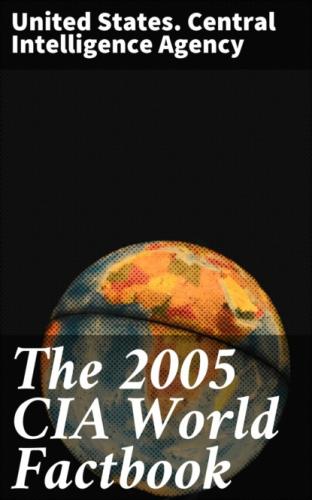based on Portuguese civil law system and customary law; recently
modified to accommodate political pluralism and increased use of
free markets
Suffrage:
18 years of age; universal
Executive branch:
chief of state: President Jose Eduardo DOS SANTOS (since 21
September 1979); note - the president is both chief of state and
head of government
head of government: President Jose Eduardo DOS SANTOS (since 21
September 1979); note - the president is both chief of state and
head of government; Fernando de Piedade Dias DOS SANTOS was
appointed Prime Minister on 6 December 2002, but this is not a
position of real power
cabinet: Council of Ministers appointed by the president
elections: president elected by universal ballot for a five-year
term; President DOS SANTOS originally elected (in 1979) without
opposition under a one-party system and stood for reelection in
Angola's first multiparty elections 29–30 September 1992 (next to be
held September 2006)
election results: DOS SANTOS 49.6%, Jonas SAVIMBI 40.1%, making a
run-off election necessary; the run-off was not held and SAVIMBI's
National Union for the Total Independence of Angola (UNITA)
repudiated the results of the first election; the civil war resumed
Legislative branch:
unicameral National Assembly or Assembleia Nacional (220 seats;
members elected by proportional vote to serve four-year terms)
elections: last held 29–30 September 1992 (next to be held September
2006)
election results: percent of vote by party - MPLA 54%, UNITA 34%,
others 12%; seats by party - MPLA 129, UNITA 70, PRS 6, FNLA 5, PLD
3, others 7
Judicial branch:
Supreme Court or Tribunal da Relacao (judges are appointed by the
president)
Political parties and leaders:
Liberal Democratic Party or PLD [Analia de Victoria PEREIRA];
National Front for the Liberation of Angola or FNLA [disputed
leadership: Lucas NGONDA, Holden ROBERTO]; National Union for the
Total Independence of Angola or UNITA [Isaias SAMAKUVA], largest
opposition party has engaged in years of armed resistance; Popular
Movement for the Liberation of Angola or MPLA [Jose Eduardo DOS
SANTOS], ruling party in power since 1975; Social Renewal Party or
PRS [disputed leadership: Eduardo KUANGANA, Antonio MUACHICUNGO]
note: about a dozen minor parties participated in the 1992 elections
but only won a few seats and have little influence in the National
Assembly
Political pressure groups and leaders:
Front for the Liberation of the Enclave of Cabinda or FLEC [N'zita
Henriques TIAGO, Antonio Bento BEMBE]
note: FLEC is waging a small-scale, highly factionalized, armed
struggle for the independence of Cabinda Province
International organization participation:
ACP, AfDB, AU, FAO, G-77, IAEA, IBRD, ICAO, ICCt (signatory),
ICFTU, ICRM, IDA, IFAD, IFC, IFRCS, ILO, IMF, IMO, Interpol, IOC,
IOM, ISO (correspondent), ITU, MIGA, NAM, OAS (observer), SADC, UN,
UNCTAD, UNESCO, UNIDO, UPU, WCO, WFTU, WHO, WIPO, WMO, WToO, WTO
Diplomatic representation in the US: chief of mission: Ambassador Josefina Perpetua Pitra DIAKIDI chancery: 2108 16th Street NW, Washington, DC 20009 telephone: [1] (202) 785–1156 FAX: [1] (202) 785–1258 consulate(s) general: Houston and New York
Diplomatic representation from the US:
chief of mission: Ambassador Cynthia EFFIRD
embassy: number 32 Rua Houari Boumedienne (in the Miramar area of
Luanda), Luanda
mailing address: international mail: Caixa Postal 6468, Luanda;
pouch: American Embassy Luanda, Department of State, Washington, DC
20521–2550
telephone: [244] (2) 445–481, 447–028, 446–224
FAX: [244] (2) 446–924
Flag description:
two equal horizontal bands of red (top) and black with a centered
yellow emblem consisting of a five-pointed star within half a
cogwheel crossed by a machete (in the style of a hammer and sickle)
Economy Angola
Economy - overview:
Angola has been an economy in disarray because of a quarter century
of nearly continuous warfare. An apparently durable peace was
established after the death of rebel leader Jonas SAVIMBI in
February 2002, but consequences from the conflict continue including
the impact of widespread land mines. Subsistence agriculture
provides the main livelihood for 85% of the population. Oil
production and the supporting activities are vital to the economy,
contributing about 45% to GDP and more than half of exports. Much of
the country's food must still be imported. To fully take advantage
of its rich natural resources - gold, diamonds, extensive forests,
Atlantic fisheries, and large oil deposits - Angola will need to
continue reforming government policies and to reduce corruption.
While Angola made progress in further lowering inflation, from 325%
in 2000 to about 106% in 2002, the government has failed to make
sufficient progress on reforms recommended by the IMF such as
increasing foreign exchange reserves and promoting greater
transparency in government spending. Increased oil production
supported 7% GDP growth in 2003 and 12% growth in 2004.
GDP (purchasing power parity):
$23.17 billion (2004 est.)
GDP - real growth rate:
11.7% (2004 est.)
GDP - per capita:
purchasing power parity - $2,100 (2004 est.)
GDP - composition by sector: agriculture: 8% industry: 67% services: 25% (2001 est.)
Labor force:
5.41 million (2004 est.)
Labor force - by occupation:
agriculture 85%, industry and services 15% (2003 est.)
Unemployment rate:
extensive unemployment and underemployment affecting more
